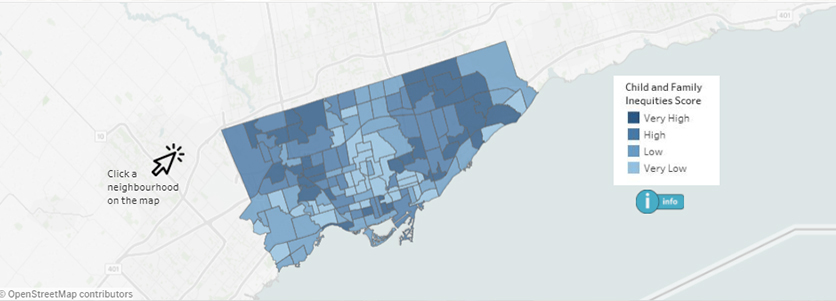Congratulations to three of our staff who will be retiring between May and June 2018. We have been fortunate that you have been part of the EASI family and have accomplished so much.
Learn more about each retiree below, and please join me in wishing them all the best on their next adventures!
Cathy Eberts
Director, Enterprise Applications and Solutions Integration
Charanjit Bajaj – Senior Production Coordinator
Joined U of T: August 2, 1988
Retirement: September 1, 2018
Last day in the office: May 25, 2018
Describe your background and how you arrived at EASI
In the early 1980s, I started my career in IT operations at TD Canada Trust, and then I moved to Toronto General Hospital. I joined EASI (formerly Business Information Systems) in August 1988 as a Production Co-ordinator, and it was a small and friendly department.
During the migration from the legacy system to SAP, I created all production background jobs in SAP for various modules like FIS, HRIS and Payroll. I take pride in adding that I was part of the team that developed and implemented the ‘Off-Cycle Pay’ module in SAP, an achievement for which our team was awarded the 2015 U of T Excellence Through Innovation Award. Outside of work, I enjoy cooking, walking and investing.
What will you remember most about EASI?
I’ll remember the friendly and supportive environment. Everyone was always very helpful. We started off as a small family with Business Information Services, and we transformed into a big family with EASI. I’ve been with EASI for 30 years, and it’s been a wonderful journey. I’ll really miss everyone.
What will you remember most about U of T?
When working here, I felt like I never left university. I loved my regular summertime walks around campus and seeing ambitious students who were at the beginning of their journeys. It’s been really exciting to work in this environment.
What do you plan to do in retirement?
I plan to keep healthy, go on lots of walks and I’m going on a Caribbean cruise in August. I also plan to play with my grandchildren a lot and visit the east and west coasts. Beyond major trips, I’ll develop my cooking hobby by making mouth-watering, savory dishes – I find cooking is a tonic for both body and soul. My wife and I are going to learn French together as well, so I’ll be busy!
What words of wisdom would you pass along to others?
Do what makes you happy and be helpful to others!

Patrick Boal – Information Technology Specialist
Joined U of T: April 1, 1997
Retirement: August 31, 2018
Last day in the office: July 3, 2018
Describe your background and how you arrived at EASI
In an earlier age, I studied to be a journalist and went to work in the business press on monthly magazines – I never knew I would work within the SAP universe. But, I taught a course in computer science at a high school as a favour for a friend, and this small reference on my resume led to an all-expenses paid opportunity to become an SAP consultant. This was how I first came to U of T, where I eventually chose to stay full time in 1997.
What will you remember most about EASI?
Friday afternoon lunches at New Ho King. The “gang” (a rotating cast of characters but often including Svetalana Opachevsky, George Mammoliti, Kim Chan, Andrey Pletnev, Darshan Harrinanan and Alex Dault).
What will you remember most about U of T?
The camaraderie of my colleagues, the leadership of Cathy Eberts, and winning my VPUO award for Distinguished Service in 2016 (shaking hands with former CIO Bob Cook was a true honour and privilege). I really enjoyed working with the many divisions across the University, including Financial Services, Facilities & Services, and the folks at Vice-President of Research & Innovation.
What do you plan to do in retirement?
I plan to continue with my writing and I have a new book coming out this summer called Living Gods. I’ve also published a novel called, Dying Gods which is a modern retelling of the dying god myth based on the medieval story of Sir Gawain and the Green Knight. Dying Gods is currently available for purchase at a reasonable price on Amazon.ca.
I also plan to spend time in the Dodecanese in Greece visiting friends and just plain relaxing.
What words of wisdom would you pass along to others?
If you have young children, take time off to spend with them when they are young. You won’t get a chance to do that again.

Danny Mak – Technical Solutions Architect & Coordinator
Joined U of T: December 14, 1987
Retirement: June 30, 2018
Last day in the office: May 18, 2018
Describe your background and how you arrived at EASI
During my 30 years at U of T, I worked at the Faculty of Engineering, the Research Services Department and then EASI. I was part of the team that built the Research Information System and My Research On Line, which was the first AMS central administrative web-based system. Since joining EASI 18 years ago, I’ve progressed from SAP developer, system administration, upgrade and migration projects, and architecting solutions. In my free time, I watch the Jays, Raptors and Leafs. I also cook, and my current Candy Crush level is 2,409!
What will you remember most about EASI?
I enjoyed working with my project teams, small and large. Everyone was very cooperative and it was fun to achieve a common goal. When I needed support, management was always there and I want to thank my colleagues and friends for such a great work experience.
What will you remember most about U of T?
I’ll remember the friendly working environment and having the choice to experience the city or campus during lunch. I’ll also remember walking to a Blue Jays, Raptors or Leafs game after work. And I’ll remember never missing my pay, thanks to EASI (just joking).
What do you plan to do in retirement?
I plan to travel to Asia during my two-month stay in Hong Kong. I also plan to finish all of my mini home projects, practice Tai Chi and take a professional nutrition and cooking class…and lots more…
What words of wisdom would you pass along to others?
Know your strengths and weaknesses and do things that you really enjoy doing. Always prepare and keep yourself updated on new things – opportunity will knock at any time. Try to develop “humour” as one of your character strengths. It helps teams work better and it will keep you healthy.















